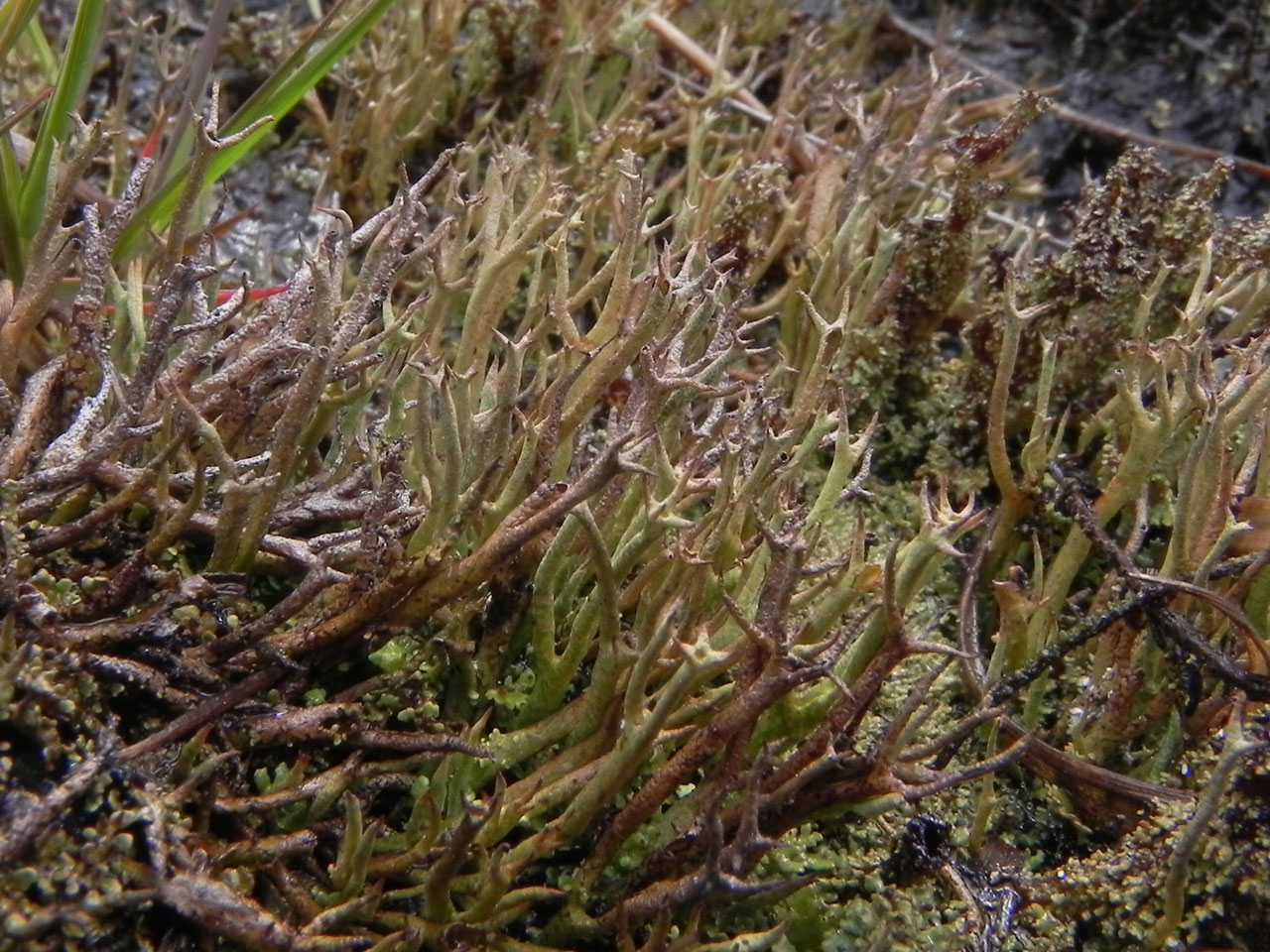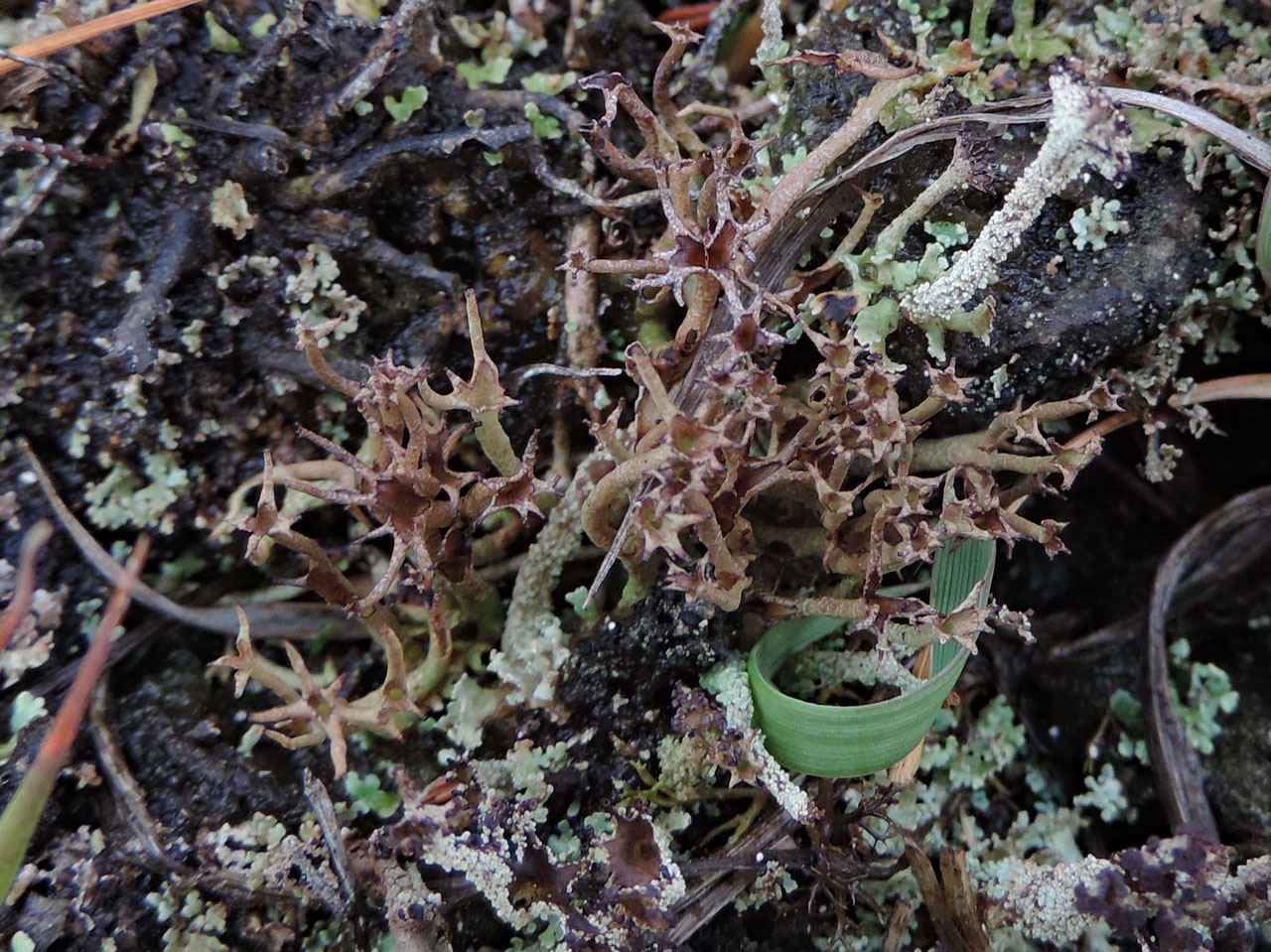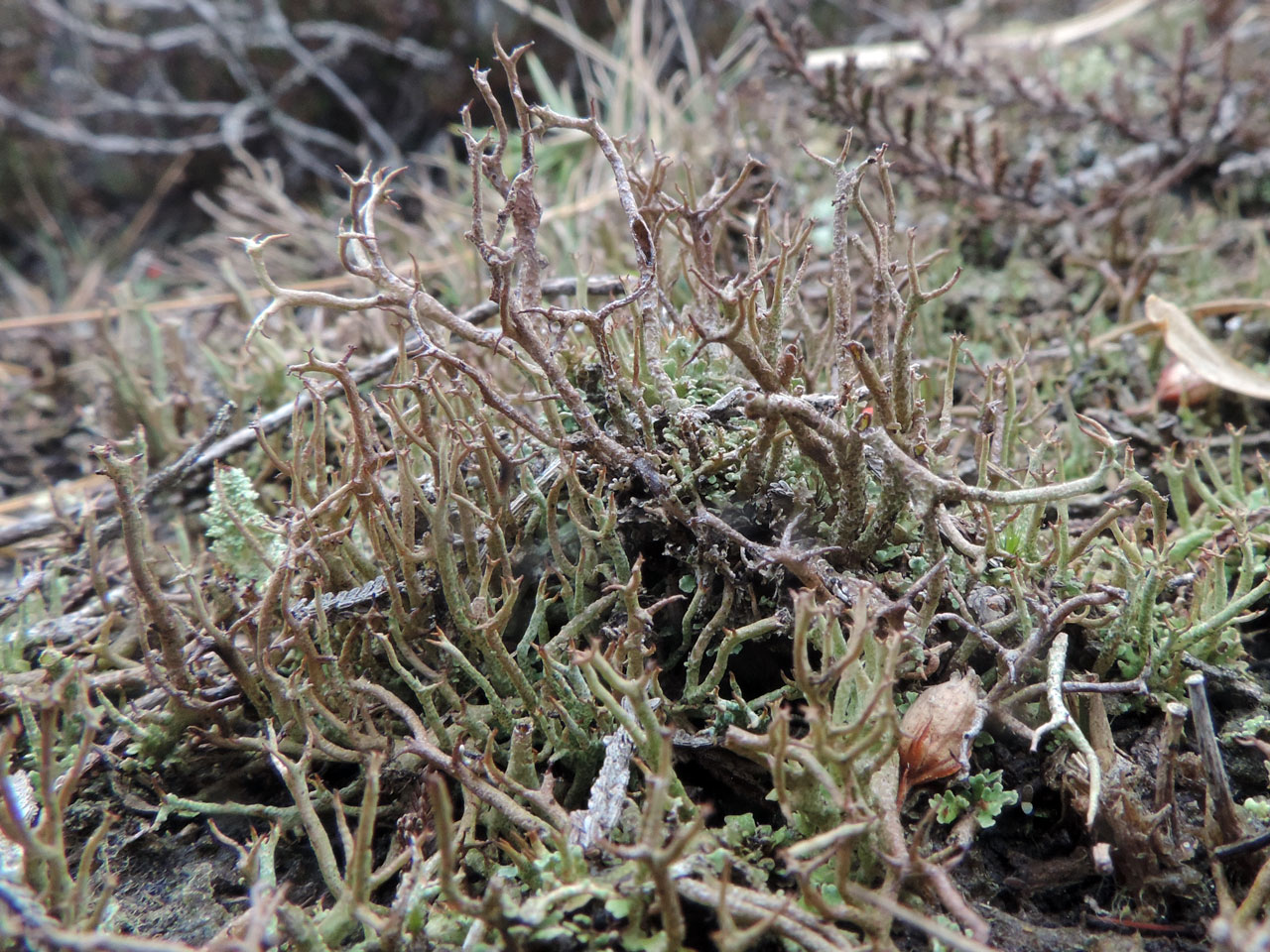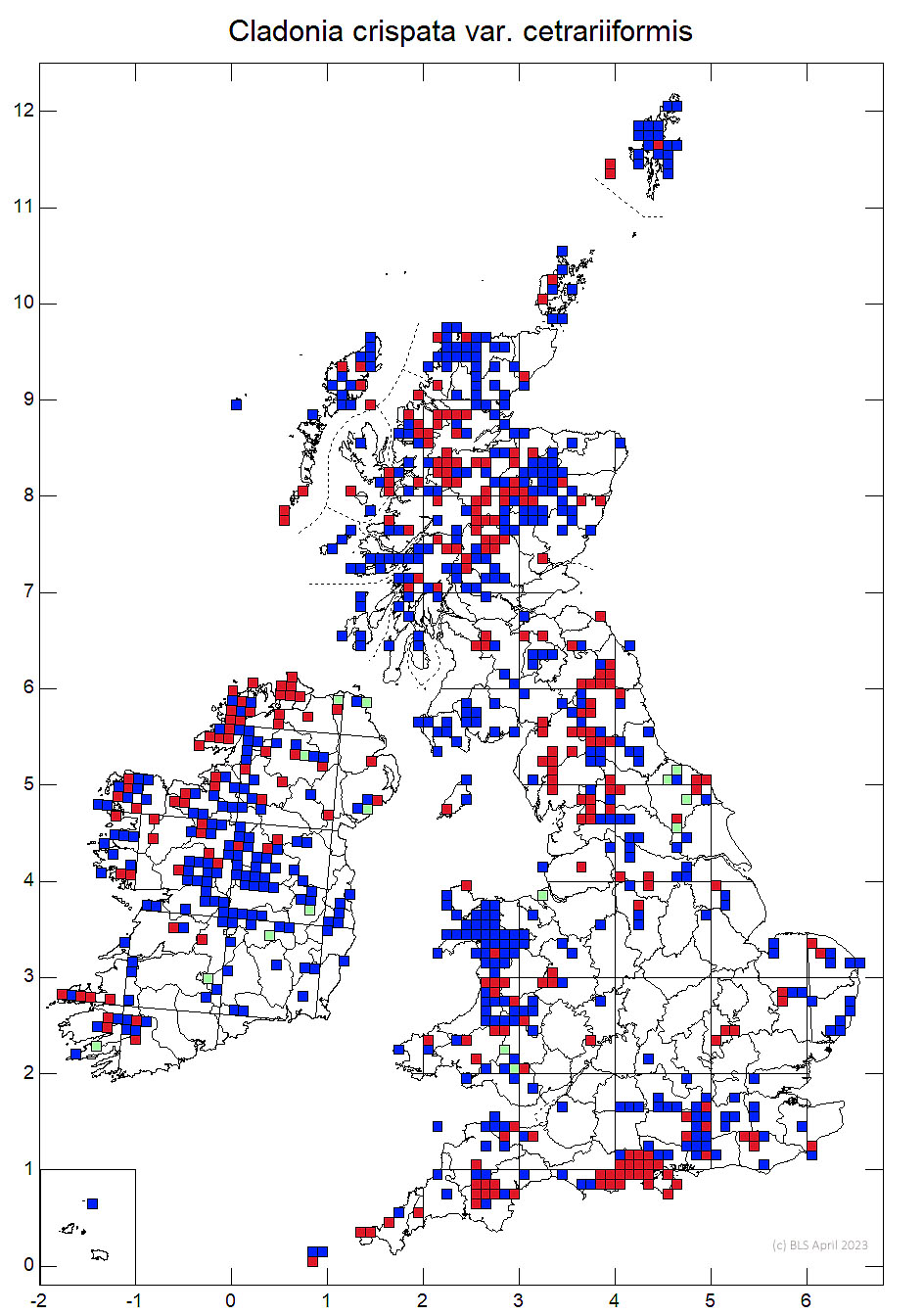A Heathtail characteristic of open low productivity acidic humus and peat soils in lichen-rich Calluna heathland in moorland and montane areas. When well developed the tips of the podetia terminating in very narrow cup-like structure consisting of a single perforation surrounded by short spines giving a star like effect, which is very distinctive. This is especially so when combined with the UV+ white and Pd– spot tests. Less well developed material lacking the terminal perforations can be very similar to Cladonia furcata but this is Pd+ red and UV– and is abundant in less acid habitats. Locally rare and perhaps declining in parts of the lowlands, but widespread in well preserved damp lowland heaths and in the uplands.
Podetia 2–6 cm tall, ± clustered, pale to dark brown-grey to brown-green, unbranched or irregularly branched, particularly in the upper parts, when mature initially terminating in a very narrow cup-like structure consisting of a single perforation surrounded by short spines, subsequently one of these spines may proliferate to form an additional extension, a process which may be repeated several times; surface ± smooth, corticate and ± faintly pale areolate, sometimes partly squamulose. Basal squamules 1–2 mm in size, indented, the underside white and smooth, often disappearing when the podetia mature. Apothecia to 1 mm diam., pale to dark brown, on terminal spines, ± corymbose, rather frequent. Pycnidia dark brown, at apices of podetia, frequent, associated with terminal spines. Thallus C–, K–, KC–, Pd–, UV+ white (squamatic and ± barbatic acids).
Characterised by the dark colour (paler in shade morphs), irregular branching, podetia terminating in a single perforation surrounded by short spines (<0.5 mm) and in being Pd– and UV+ white. Immature specimens may resemble Cladonia furcata which is Pd+ red and UV–. The coarser and very sparingly branched C. gracilis entirely lacks perforations with spines, has a more continuous cortex and is Pd+ red (fumarprotocetraric acid) and UV– (squamatic acid absent). Sterile squamules are similar to those of C. callosa, but these are UV+ bright mauve and have finely tomentosa under sides.
On peaty soils in lichen-rich Calluna heathland in moorland and montane areas; frequent but rather local.

Throughout Britain and Ireland, except area lacking acid soils.
Regionally rare and potentially declining in some lowland areas.
Pino-Bodas, R., Sanderson, N., Cannon, P., Aptroot, A., Coppins, B., Orange, A. & Simkin, J. (2021). Lecanorales: Cladoniaceae, including the genera Cladonia, Pilophorus and Pycnothelia. Revisions of British and Irish Lichens 19: 1-45. Link
Text by Neil A Sanderson, based on Pino-Bodas et al (2021)



